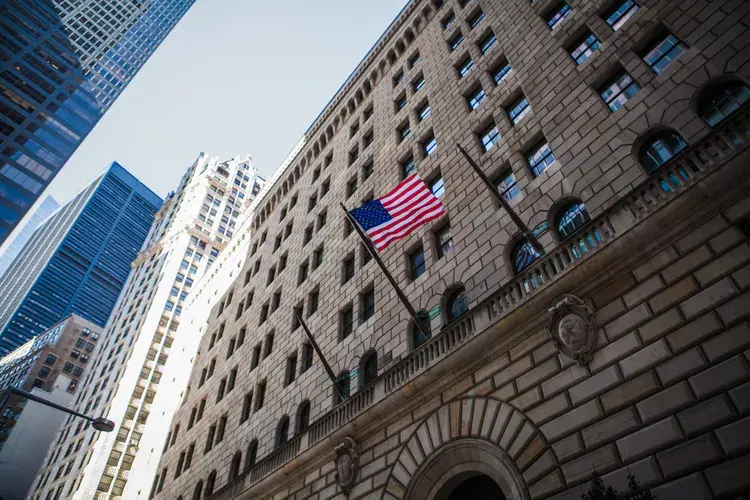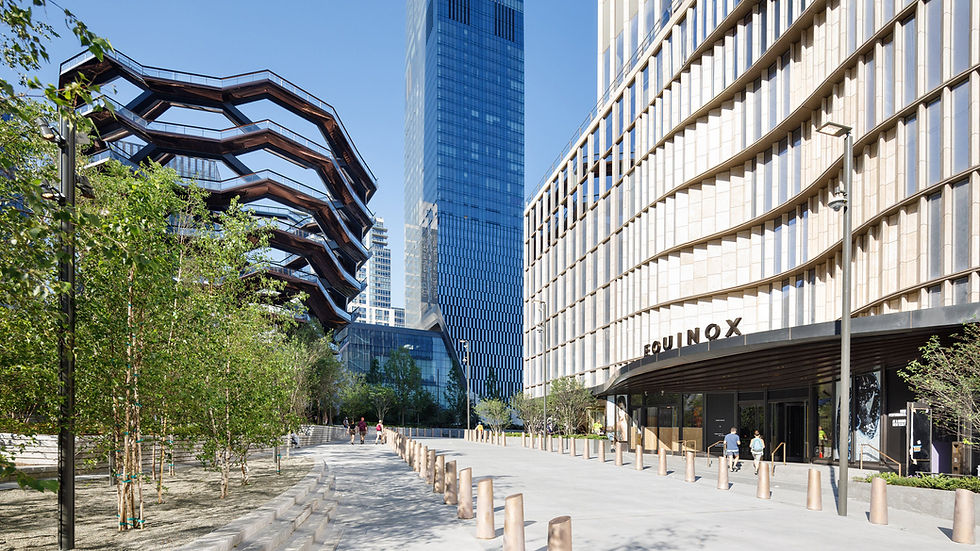Weekly Market Report - December 6, 2021
- Norman Bobrow

- Dec 6, 2021
- 6 min read
Updated: Dec 22, 2021
Private-equity firm KKR & Co., which owns the top 10 office floors of the development’s flagship office tower at 30 Hudson Yards, is looking to expand its footprint, according to people familiar with the matter. Financial-services company Wells Fargo & Co., which already occupies 500,000 square feet in the same building, has also expressed interest in more space, these people said. An expansion would mark the latest commitment by KKR to Hudson Yards and New York City even as it remains uncertain when office workers and tourists will return in significant numbers. The company last month bought a majority stake for more than $500 million in the observation deck at the top of the building. An expansion would mark the latest commitment by KKR to Hudson Yards and New York City even as it remains uncertain when office workers and tourists will return in significant numbers. The company last month bought a majority stake for more than $500 million in the observation deck at the top of the building. At more than $125 a square foot in the most recent quarter, the Hudson Yards and Manhattan West—another large development in the same neighborhood—had the highest average asking rents for office space in Manhattan. The borough’s average asking rent in the third quarter was nearly $73 a square foot.
In a transaction announced Monday, 110 East 42nd Street traded hands for slightly more than $117 million. The landlord said in a release that Meadow Partners is acquiring the ownership interest of the office and garage condominiums “on behalf of a separately managed account.” The deal between SL Green and Meadow Partners comes just a month after Manhattan office tenants signed deals for more than 3 million square feet of leases, the highest volume since January 2020. The Midtown building was constructed in 1923. The 18-floor building stands 237 feet tall and encompasses 304,000 square feet, including slightly more than 215,000 square feet of usable space. In 2007, the office landlord sold the building to Gotham Realty Holdings for $111.5 million. Four years later, SL Green reacquired the building for $85.5 million. The office condominium stretches from the sixth floor to the 18th, including part of the ground floor. The building’s exterior and lobby were designated landmarks by the city, as well as the Cipriani event hall at the base of the building. The office condominium stretches from the sixth floor to the 18th, including part of the ground floor. The building’s exterior and lobby were designated landmarks by the city, as well as the Cipriani event hall at the base of the building, a separate condominium. SL Green said it plans on using proceeds of the ownership sale for its share repurchase program. The transaction is expected to close by the end of the year.
The developers, along with Flatiron Equities, acquired the building for $70 million in an all-cash deal from the Karten family, which owned it for almost four decades, Crain’s reported. The 87,000-square-foot building spans the lots of 309 East 94th Street and 324 East 95th Street and includes a two-story garage and an auto shop.The developers have the ability to build up to 205,000 square feet, Taconic president Chris Balestra told Crain’s. The outlet reported it’s not clear what the firms will redevelop the property into, but general and medical office use are among the considerations. The developers have the ability to build up to 205,000 square feet, Taconic president Chris Balestra told Crain’s. The outlet reported it’s not clear what the firms will redevelop the property into, but general and medical office use are among the considerations. Rental apartments do not appear to be one of the considerations, as the property is zoned for office use. According to Crain’s, construction won’t begin for at least a year, but is expected to finish by 2025.
The big online shopping holiday comes amid a warehouse shortage across the United States as distribution center vacancy rates are at all-time lows. Nearly 96% of existing industrial space is in use. The U.S. may need an additional 1 billion square feet of new industrial space by 2025 to keep up with demand, JLL estimates. For example, another nearly 190 million square feet of warehousing space was under construction in North America during 2020, and more than 43% of the buildings were pre-leased. This demand is driven by retailers beefing up e-commerce operations amid the online shopping boom and investing in faster delivery thanks to consumer expectations. Retailers are also securing more storage space in the U.S. to mitigate the impact of future supply chain shocks, like those caused by the coronavirus pandemic. Plus, e-commerce and logistics take up three times as much space as brick-and-mortar retail. The expansion of warehousing has shifted local economies, like in the Lehigh Valley of Pennsylvania. The rapid growth has created controversy over land use because the warehouse boom is tightening the supply of land.
Cipriani, the go-to Manhattan venue for celebrity galas and corporate holiday parties, faces the prospect of foreclosure at two New York City locations after defaulting on its mortgage last year. The hospitality company has been in default since May 2020 on $53 million in mortgage debt, according to real-estate data firm Trepp. The loan, which is packaged into bonds, are backed by two Cipriani properties, on 42nd Street and Wall Street. Draft foreclosure documents have been prepared, according to the loan servicer, but New York state currently has a moratorium on commercial evictions and foreclosures. New York’s moratorium has been extended several times and is currently scheduled to expire next month. Without the moratorium, Cipriani could lose control of those two buildings. The increasing debt pressure shows how difficult it is for even iconic New York City locales that attract deep-pocketed clients to recover from the coronavirus pandemic. The parent Cipriani S.A. traces its roots back to Giuseppe Cipriani Sr., who founded Harry’s Bar in Venice in the 1930s. Mr. Cipriani created the famous Prosecco-based Bellini cocktail at that bar, where Hollywood celebrities like Orson Welles and author Ernest Hemingway used to visit. Spokeswoman Ms. Girombelli said Cipriani is reopening locations that were closed during the pandemic and remains confident that New York City’s hospitality sector will recover. “We can assure our customers that we are here to stay and we look forward to serving them for a long time into the future,” she said. “There will be no interruption to service at Cipriani Wall Street or Cipriani 42nd Street.”
An architecturally ambitious skyscraper proposed for Manhattan’s West Side would be by one measure the tallest in the Western Hemisphere, and a property its Black developer hopes would be symbolic. The project known as Affirmation Tower is a 2 million square-foot, $3.5 billion development planned for a 1.2-acre plot of state-owned land facing the Jacob K. Javits Convention Center. It is one of a number of proposals that New York state’s Empire State Development Corporation is considering for the site. The project’s lead developer is Peebles Corp., a New York City-based real-estate company. Don Peebles, the company’s chief executive and one of the country’s most prominent Black developers, said he would like the tower to reflect New York’s post-pandemic recovery. Designed by Sir David Adjaye, a Black Ghanaian-British architect, the tower would be developed, built and largely funded by a team of Black-owned companies. The partners said they would award a significant share of the construction work, exceeding the 30% suggested by the state, to minority- and female-owned contractors. At 1,663 feet, the 90-story building would be taller by floor height than One World Trade Center, but shorter by spire height, which was done out of respect for the ones who lost their lives. Additionally, The building would include a skating rink, at least two hotels, an entertainment complex and a rooftop restaurant and ballroom. The ground floor would house incubator space for local minority- and female-owned retailers and creators. The plaza garden would also feature tributes to historically prominent Black New Yorkers, among others.









Comments